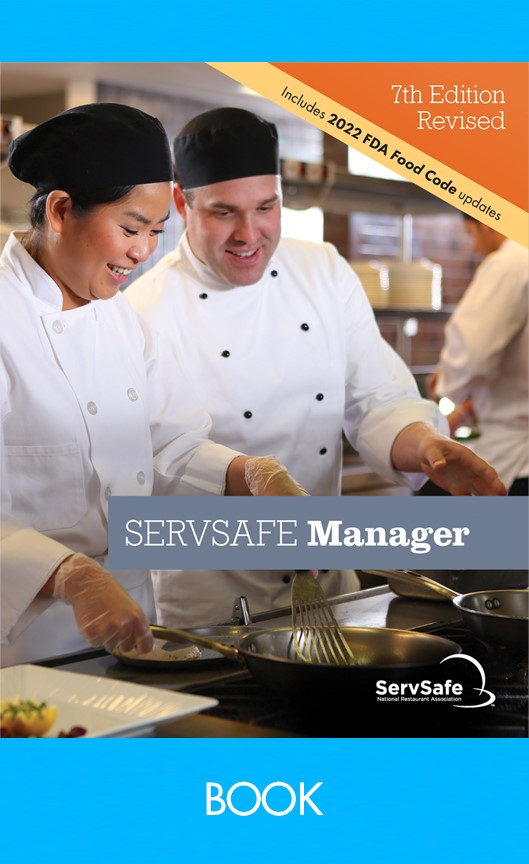Recognizing the Duty of a ServSafe Food Handler in Ensuring Food Safety Specifications
Recognizing the Duty of a ServSafe Food Handler in Ensuring Food Safety Specifications
Blog Article
Comprehensive Food Handlers Educating for Health and Safety And Security
In today's quickly evolving food solution landscape, thorough food handlers training has actually emerged as a critical part for guaranteeing health and safety. By instilling necessary practices connected to hand health, food storage space, and cleanliness, this training not only reduces the risk of foodborne illnesses yet also enhances conformity with regulative criteria. The ramifications of such training expand past mere conformity; they discuss public health and wellness and consumer depend on. Yet, the effectiveness of these training programs can vary significantly. What variables genuinely establish their success in fostering a society of safety and security?
Significance of Food Security Training

Furthermore, food safety and security training aids to make certain that employees recognize current policies and standards, which are essential for maintaining operational licenses and preventing expensive charges. Normal training sessions also serve as a platform for enhancing ideal techniques, consequently decreasing the probability of human mistake, which frequently functions as a leading root cause of food contamination.
Additionally, buying food security training can improve an establishment's online reputation, as consumers significantly focus on dining experiences that reflect high safety criteria. Such positive actions not only safeguard consumers however additionally add to the lasting success of food organizations. In recap, detailed food safety training is a crucial component of food service procedures, directly influencing both public health and business sustainability.
Key Concepts of Hygiene
Preserving high standards of hygiene is important in any kind of food dealing with environment to stop contamination and guarantee the safety and security of consumers. The key principles of hygiene encompass several crucial techniques that food handlers have to consistently use.
First, hand health is paramount; food trainers ought to wash their hands thoroughly with soap and water prior to and after dealing with food, along with after using the toilet or touching any kind of possibly contaminated surface areas. Secondly, tools and surfaces have to be routinely cleansed and sanitized to eliminate virus. This includes utensils, cutting boards, and kitchen counters, which ought to be maintained in a clean condition.


Correct food storage is also vital; raw foods should be saved individually from prepared or ready-to-eat products to stay clear of cross-contamination. servsafe food handler. Furthermore, maintaining ideal temperature level controls is critical; perishable things must be kept at risk-free temperature levels to prevent microbial development
Finally, personal health can not be ignored. Food trainers need to wear tidy garments, usage hair restraints, and prevent working when ill. By adhering to these vital principles of health, food handlers can significantly minimize the danger of foodborne health problems and promote a more secure eating experience for all consumers.
Usual Foodborne Diseases
Although numerous foodborne illnesses can be avoided via correct hygiene and risk-free food managing techniques, they stay a significant public health issue. Foodborne microorganisms can result in a selection of ailments, ranging from mild stomach distress to extreme issues and also death.
Common foodborne diseases consist of salmonellosis, triggered by Salmonella bacteria, typically connected to undercooked chicken and eggs. One more widespread disease is listeriosis, associated with raw dairy products and ready-to-eat meats, which can be especially unsafe for pregnant ladies and immunocompromised people. Norovirus, often contracted from infected food or surfaces, is recognized for its quick spread and capacity to trigger episodes in common settings.
Escherichia coli (E. coli) infection, significantly connected with undercooked hamburger and Related Site polluted fruit and vegetables, can cause serious abdominal aches and kidney failure in some instances. Additionally, Clostridium perfringens, typically located in huge quantities of food that are incorrectly stored, can cause food poisoning with signs showing up soon after intake.
Understanding these illnesses is essential for food handlers, as recognition can considerably reduce the threat of contamination and shield public wellness. Proper education and training are important helpful site elements in combating foodborne diseases.
Best Practices for Food Handling
Reliable food managing practices are essential in stopping the spread of foodborne diseases. Proper hand health is important; food trainers have to clean their hands extensively with soap and water before and after dealing with food, specifically raw meat or chicken. This easy activity significantly lowers the risk of cross-contamination
Second of all, maintaining appropriate food storage temperature levels is critical. On a regular basis sanitize counter tops, cutting boards, and utensils, particularly after preparing raw foods. Usage separate cutting boards for raw and ready-to-eat foods to better minimize contamination risks.
Additionally, when preparing food, it is important to adhere to the concept of "initial in, first out" (FIFO) to take care of stock successfully and reduce Home Page wasting. Constantly review and stick to food product tags for safe cooking temperatures and managing guidelines. By executing these best methods, food trainers can considerably boost food security and protect public wellness.
Carrying Out a Safety Culture
Developing a safety society within a food taking care of environment is necessary for fostering a commitment to food safety and security among all team member. This society highlights the relevance of food safety and security as a common obligation, encouraging employees to focus on health methods continually.
To execute a safety and security society, companies must begin by giving comprehensive training that resolves food handling protocols, possible risks, and the relevance of individual hygiene. Educating sessions should be interactive and tailored to the certain roles of employee, guaranteeing relevance and involvement.
In addition, management plays a vital function in establishing this culture. Monitoring should model safe methods and connect the value of food safety regularly. Acknowledging and rewarding staff members who promote safety and security requirements can better reinforce these actions.
Additionally, open interaction channels must be developed, allowing staff to report security issues without anxiety of effect. Routine security audits and feedback sessions can help identify locations for enhancement and strengthen responsibility.
Eventually, growing a safety society not only boosts conformity with food safety guidelines however also safeguards public health and wellness, cultivates employee spirits, and adds to the general success of the food managing facility.
Verdict
To conclude, thorough food trainers training plays an essential function in advertising health and safety within food solution establishments. By outfitting workers with necessary knowledge about food safety concepts, common foodborne illnesses, and finest practices for handling food, such training dramatically reduces health and wellness risks. Fostering a society of safety improves the establishment's credibility and aligns with consumer expectations for high safety criteria, inevitably adding to public health and wellness defense and the general success of the food solution market.
In today's rapidly advancing food solution landscape, thorough food handlers training has actually emerged as a crucial part for making certain hygiene and security.Food security training is crucial for keeping high standards in food handling and preparation, with studies showing that proper training can lower foodborne health problems by up to 30%. In recap, detailed food safety and security training is a crucial aspect of food solution procedures, directly impacting both public wellness and business sustainability.

Report this page